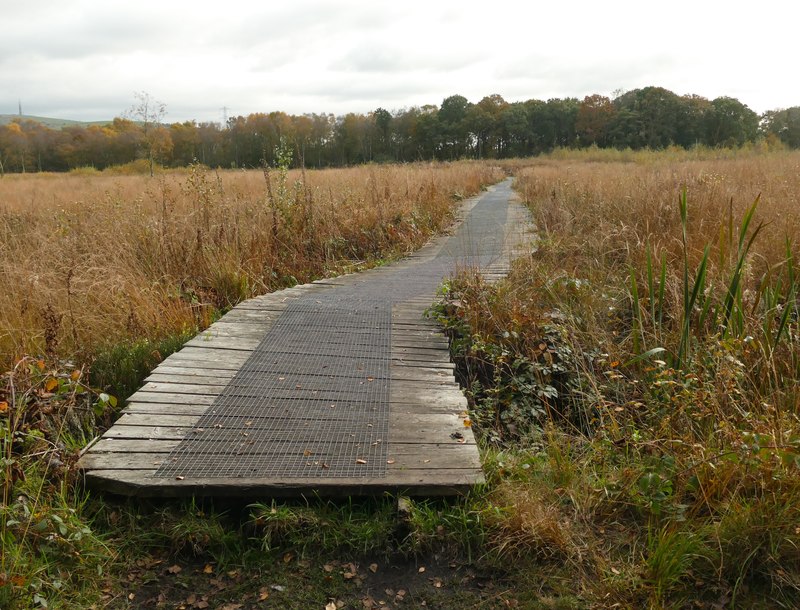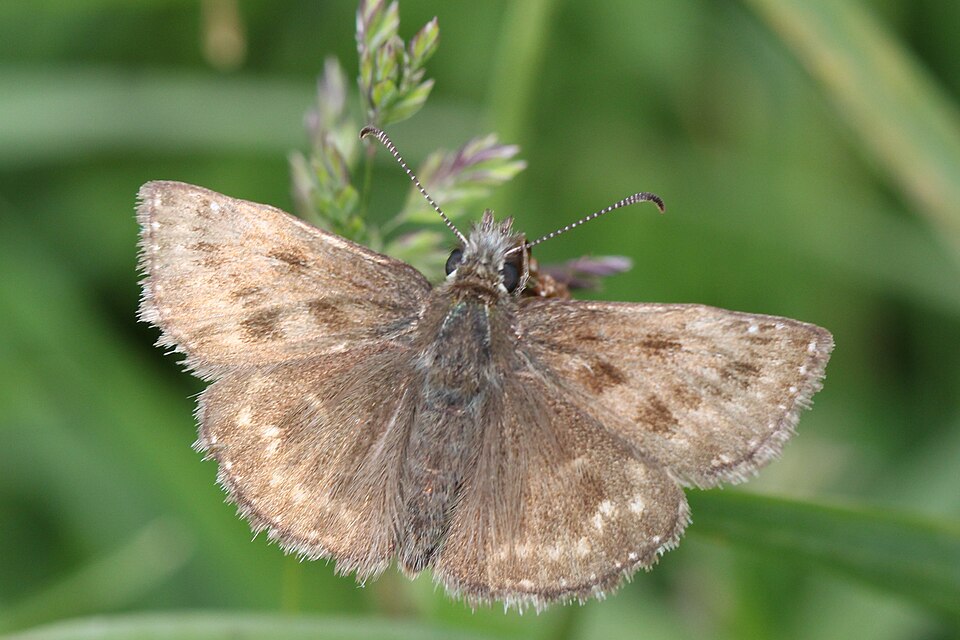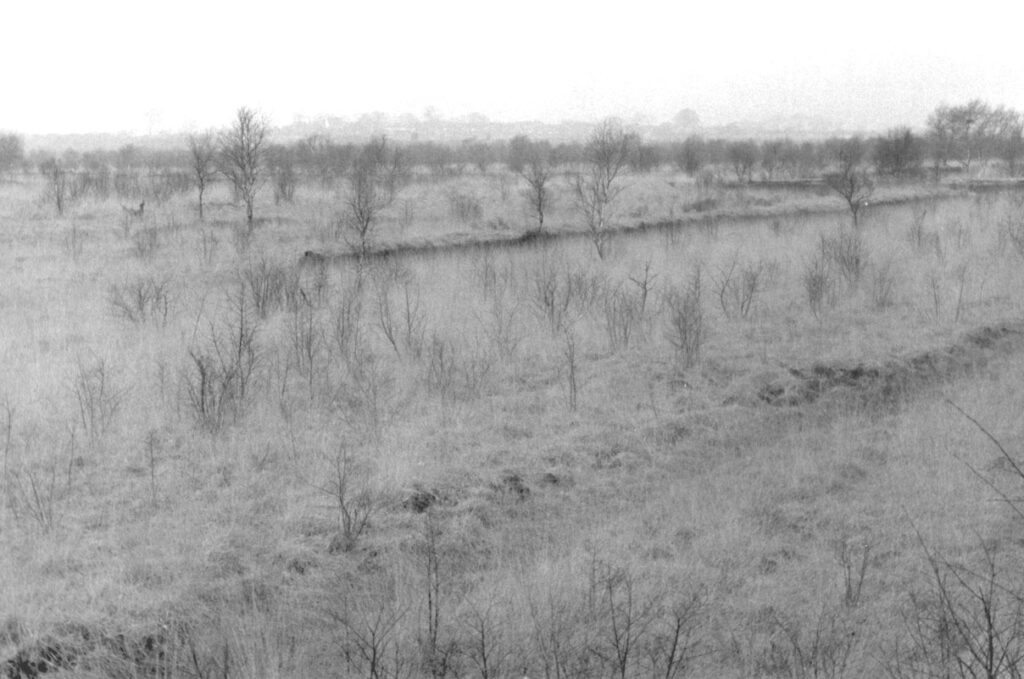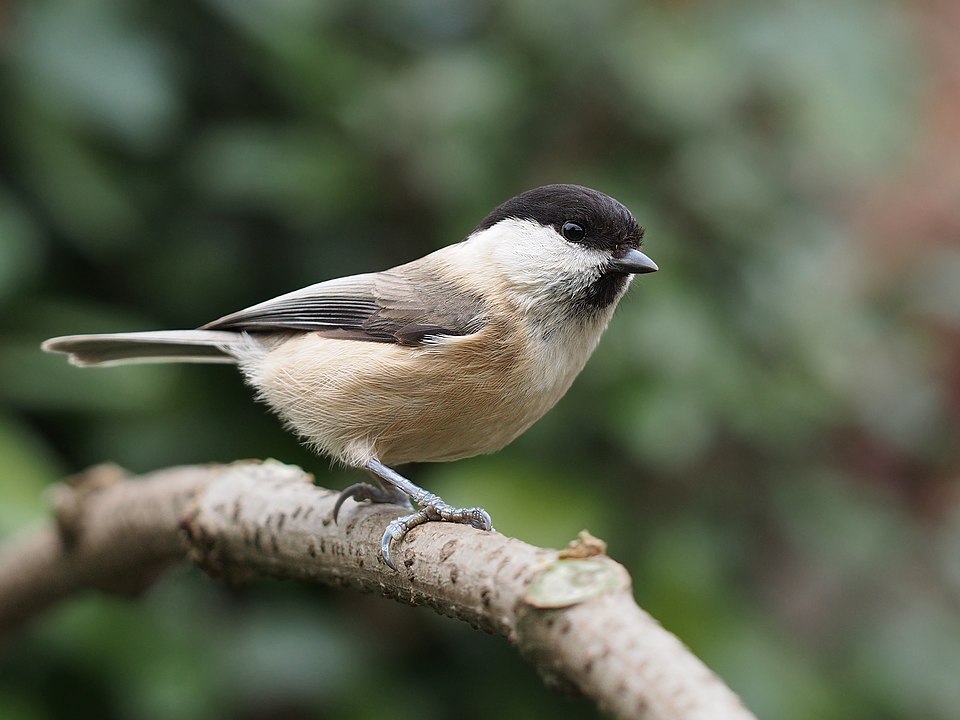Peatland protection at Danes Moss: in conversation with Roger Meade

“Where is the fighting spirit of nature conservation? In the heady days of the NCC, we were branded as zealots, and if it ever fitted, I would wear that badge with pride. “
Danes Moss, a lowland raised bog on the outskirts of Macclesfield, is among the scarcest and most threatened habitats in the UK. The carbon storage capacity of the deep peat is invaluable and the open bogland hosts a biodiverse flora and fauna. With disregard to the habitat’s ecological significance, the peatland continues to be targeted as a site for housing development.
Amy Jane-Beer wrote passionately about her encounter with Danes Moss and those working to conserve it in the June issue of British Wildlife. Following publication, we spoke to Dr. Roger Meade, former Senior Peatland Advisor to English Nature, about the reserve, recent developments and the outlook for its future protection.
©Graham Hogg (CC-BY-SA 2.0) Boardwalk in Danes Moss Nature Reserve
An increasingly scarce habitat with a diverse flora and fauna
The area of peatland bog now known as Danes Moss was once estimated to have covered 1000 acres. Due to peat extraction, waste dumping and housing developments, just 482 acres remain. “It’s one of the largest examples of lowland raised bog in Cheshire”, says Roger, “such bogs are restricted to the wetter climate of the north and west in England and most have been severely damaged by peat extraction. Cutover bogs such as Danes Moss are all we have left of this habitat”.
The remaining open bogland of Danes Moss hosts a biodiverse array of wildlife. Its botany consists of Cotton Grass, Cross-leaved Heather, Sphagnum Moss and recent surveying demonstrates the presence of 1,600 plant and animal species. “In the distant past, a plant known as Bog Rosemary Andromeda polifolia was recorded here, but it has not yet returned. Ornithologically, it is notable for its population of Marsh Tits, and, as I remember, there is a veritable army of Willow Warblers passing through in April and May each year”.
Commercial peat cutting ended in 1966 and Roger first became involved with the reserve just a few years later in the early 1970s “I became the honorary nature reserve warden. We needed to understand what the area represented in habitat terms, and what, if anything, should be done. The first step was to do a plant survey of the wettest areas. Although crude and laborious, it provided a valuable baseline for monitoring change”

Dingy Skipper in Cheshire East ©Alastair Rae (CC BY-SA 2.0)
“Although much of the peat surface carried birch and heather as well as the ubiquitous Purple Moor-grass, drainage ditches had Cotton-sedge and Sphagnum Mosses. Various damming and ditch diversions were done to raise the water table over the flatter centre of the nature reserve. This was one of those eureka moments for me. Getting to grips with the concept of lowland raised bog, peat, macrofossils, glacial history and so much more inspired me to study full-time for a botany degree and then to do further research”.
The designation of Danes Moss as a Site of Special Scientific Interest (SSSI)

The still ongoing battle to acknowledge and protect cutover peatlands has been long fought. In the early 1970s, Danes Moss was dismissed as a potential SSSI candidate due to its lack of typical bog structure and important plants.
“In those early days the place of cutover peatlands in the nation’s suite of habitats was not recognised”, says Roger, “Credit must go to Richard Lindsay, then the Nature Conservancy Council’s peatland specialist, he pressed for the importance of places such as cutover bogs to be included as candidate SSSIs where there were no intact examples”.
The process of restoration by rewetting has played an instrumental role in the SSSI notification of Danes Moss. “Rewetting had been practiced and written about in Germany but it took much longer for it to be practiced in the UK. The rewetting and expansion of Sphagnum Mosses at Danes Moss must have been one of the earliest examples here and that made the success of its SSSI candidacy much easier when the time came.”
Raised bog Sphagnum Mosses Roger Meade
For a cutover peatland habitat such as Danes Moss to be designated as a SSSI, it must be possible to reinstate peat-forming vegetation “I helped facilitate the original SSSI designation in 1985, and the consequent revision in 1992. I repeated plant surveys at intervals and have shown how extensive the peat-forming vegetation has become over the re-wetted areas, confirming the original judgement that it was capable of natural regeneration to peat-forming bog.”
Defining the boundary
The original and the reviewed SSSI boundaries, in 1985 and 1992 respectively, were drawn up using information available about the extent of deep peat at the time. The Hydrological Protection Zones (HPZ) method, which calculates the width of a boundary that should be included to protect the hydrology, was not practicable until 2004. “In those early days, I had been convinced that the peat wedged out to the north into poor pasture over silty soil. The area at the north of the site consisted of small-fenced fields with unknown owners. Our reluctance to trespass meant that no peat depthing was done on them. It was only when the South Macclesfield Development Area (SMDA) proposals were made in 2019 that it became clear that the deep Danes Moss peat extended a lot further north towards Macclesfield.”

Dry Molinia North of Tramway Roger Meade 1972.
Roger laments the missed opportunity of utilising new scientific understandings like the HPZ method for peatland conservation. “If the newly-formed Natural England in 2006 had not spent so much of its time on farm payments, for example, there may have been sufficient resources to regularly upgrade SSSI boundaries to be consistent with emerging knowledge. This would have avoided situations like that occurring at Danes Moss”.
The SSSI designation of Danes Moss provided some protection for the peatland within the notified boundary and also set precedent for further SSSI notifications. “The northwest of England woke up to its raised bog heritage and a lot of effort went into identifying candidate lowland raised bogs. It was a heady time for bog conservation although many lowland bog SSSIs remained locked into peat extraction and eventual conversion to agriculture or under longstanding planning consents that over-rode their SSSI status”.
In some cases SSSI protection was afforded to peatland in the face of competing ideas for land use, Roger wonders whether this would happen under Natural England today. “When we notified another site Red Moss, Horwich, as an SSSI in the early 1990s, it was in the face of a draft Unitary Development Plan for it to be allocated as landfill. Those of us now retired can have little insight when it comes to Natural England and its use of SSSIs in nature protection in the 2020s but perhaps it was the relative independence from Defra and government that enabled English Nature to use its powers to safeguard Red Moss, in the face of strong opposition from the local authority.”
Roger has hopes for the future of Danes Moss and sites like it. “My vision would be for the whole of the deep peat at Danes Moss to be within the SSSI, as would the hydrological boundary land determined by applying the HPZ calculations. The landfill site would be managed as complementary habitat and included in the SSSI for hydrological reasons. Grants are available for managing the type of peaty wetland found around Danes Moss, but currently outside of the SSSI.”
The withdrawal of Cheshire East Council’s development plans
Despite its ecological importance, Danes Moss was earmarked for development in 1997 and plans to build 950 new houses on the peatland were set in motion in 2017.
Local communities and campaigners have worked tirelessly to ‘Save Danes Moss’ and their efforts have culminated in the recent withdrawal of development plans from Cheshire East Council who have cited ‘incompatibility with its climate and peatland policy’ as reason for the turnaround. The decision has been positively received but campaigners remain braced for a revised proposal. Thomas Eccles of the Danes Moss Trust says:
“We are clear that no development should take place on a peatland. We are in an existential nature and climate emergency. There is no balance to be struck between destroying peatlands and achieving housing targets. You can’t make a deal with climate change. Conserving the biggest store of carbon on land needs to have total priority over development every single time.”
Roger acknowledges the withdrawal as a positive development but expresses similar concerns for the future of the site: “I have great respect for the councillors in coming to this decision. It’s a situation that everyone dreads, new information comes to light and upsets plans that have been in the making for a very long time. It was a long case, and one wonders if it could have been shortened if the new information about the extent of deep peat had worked through into an SSSI boundary review. At least everyone would have known where we stood. Developers hate uncertainty too.”
Final thoughts

“Nature is not just about niche enjoyment, it underpins the existence of us all”
Ensuring long term protection for a site like Danes Moss is an enormous challenge. For Roger, the will to protect these places must come from local communities. “I would like the people of Macclesfield to cherish ‘The Moss’ as something special. It was formed thousands of years ago and links them with their fellows that came before. Signs of their past lives are buried in the peat, as ours could be in the future. Didn’t we send a capsule into space with messages from us humans to whatever life-form may eventually find it? Peatlands can do the same thing here on earth.”
The proposed development site at Danes Moss North is a stronghold for the Willow Tit© Francis C. Franklin CC BY 2.0
Roger became involved in regional work in 1981, on the crest of the emerging Wildlife and Countryside Act of 1981. “SSSIs received an enhanced level of protection through obligations placed on owners and occupiers” says Roger.
“The act was supplemented for wetlands by the emergence of Ramsar Sites, and then the full power of the EU Habitats and Species Directive 1992 which was incorporated into our own set of regulations. Other legislation followed including the CROW Act of 2000 and the Environment Act of 2021 and were part of a series of regulatory improvements in nature protection, even though accompanied by a worsening of our biodiversity.
Now, we are proposing to weaken the protection of nature with the Planning and Infrastructure Bill. I just hope that the acknowledged importance of peatlands puts Danes Moss beyond the tentacles of the bill. I wonder if something as simple and vulnerable as SSSI designation will be sufficient to safeguard it.”
Lest we be misled into thinking that nature conservation is solely the domain of the hobbyist or the enthusiast, Roger reminds us:
“Nature is not just about niche enjoyment, it underpins the existence of us all, unless we want to live in a total artificial and protected environment. Nature is existential. That is why, as a society, we must reject these retrograde proposals, which threaten to take us back to the conservation Dark Ages.
It saddens me that we have ended up in this position. Where is the fighting spirit of nature conservation? In those heady days of the Nature Conservancy Council (NCC), we were branded as zealots, and if it ever fitted, I would wear that badge with pride. As an organisation the Nature Conservancy Council and English Nature put nature first and fought hard, without fear of upsetting national or local government, or the private sector. Take heart, you young ‘uns. There’s still a lot to fight for, so get out there and say no when you have to! Believe me, we must never stop trying.”
Roger Meade wrote ‘Viewpoint: Peatland SSSI selection criteria – are they fit for purpose?‘ about Danes Moss for CLM, find the issue here
Amy-Jane Beer wrote about the site for our June issue of British Wildlife
